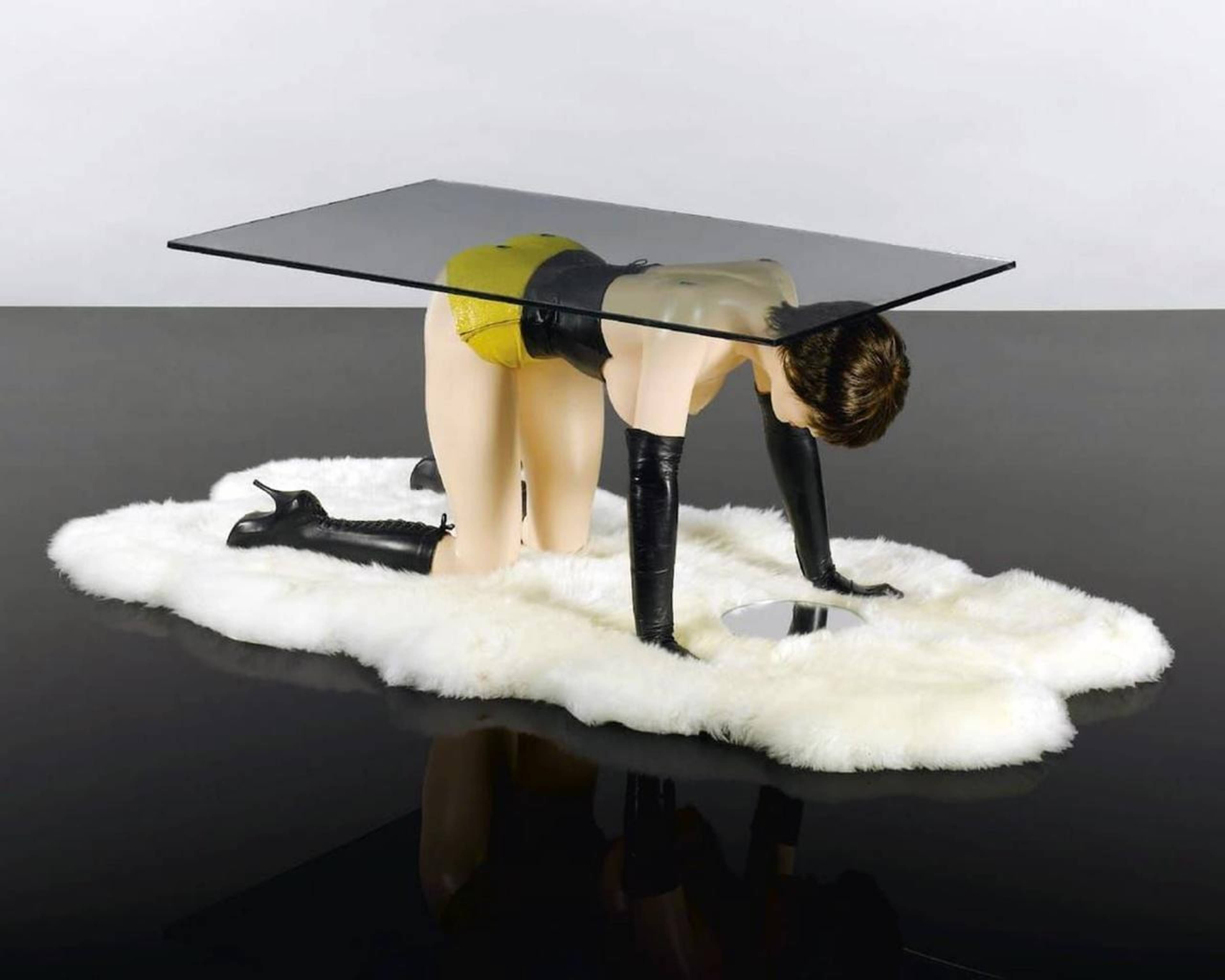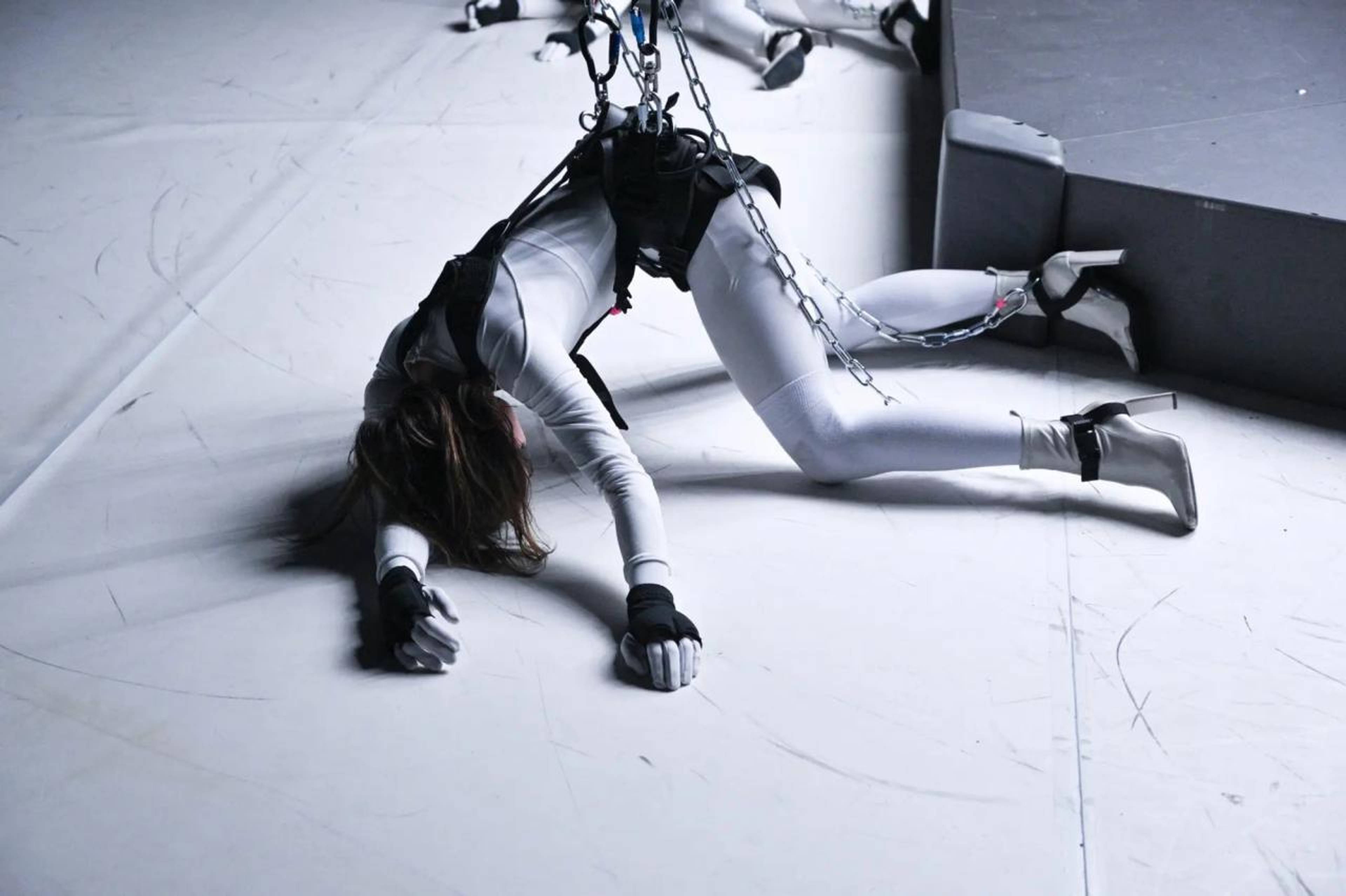Amid sharpening inequality, expanding precarity, social demobilization, and rising monopolies, we witness the emergence of a new class of corporate digital overlords and an expansion of their propertyless servants, together known as techno-neofeudalism. In a 2020 essay, political theorist Jodi Dean distinguishes this era from classical capitalism by the fact that its wealth tends to accumulate more through services, fees, licenses, free work, and non-economic forms of coercion than through waged labor. Stepping into the role of a new aristocracy, our post-internet technocrats lease their technologies and social platforms to a workforce increasingly trained to be dependent on them, in exchange for unpaid labor – sharing, posting, viewing – that sends profit back into the pockets of those technocrats. Furthermore, to reinforce their control and guarantee productivity, the ruling tech-giants employ cutting-edge digital technologies of surveillance, permeating all aspects of civilian life. No wonder so many artworks – and their avatars in social media – embody its aesthetic expression.
Despite many examples, such as Grimes (who is called the symbol of contemporary inequality) posing in medieval clothing, Balenciaga’s shining armor from Fall 2021 and Fall 2023, or even the phenomenon of the Middle Ages-inspired Bardcore music microgenre, neo-feudalism could manifest itself without passé imagery. In her now iconic project Faust (2017), Anne Imhof represented the aesthetics of coercion using purely contemporary means. The German pavilion in Venice was partitioned by bulletproof glass – of the kind primarily used in banks and corporate headquarters – into two levels. While some of the performers straddled and squeezed through the claustrophobic space underneath, visitors stood above them, observing the performers’ restricted movements. In his lambasting critique, Benjamin Buchloh associated this Panzerglas s floor division not with the Expressionist claim that “total transparency … would shift social relations from privacy to collective accessibility,” but with disciplinary powers, authoritarian secrecy, and control. The pavilion's “latent sadism of both its design and its spectators,” in Buchloh’s view, embraces “extreme hierarchy of renewed social Darwinism” and “the newly enforced German hierarchical authoritarianism, propelled by the economic drive of its corporations.” The authoritative control was wielded by glass, separating idle visitors from the subservient bodies of the performers mounting on top of each other. Like many of Imhof’s works, Faust stages for us the spectacle of descent into serfdom and makes us somehow aesthetically enjoy those social hierarchies.
Anne Imhof, Faust, 2017, performance documentation, German Pavilion, 57th Venice Biennale, Venice
Anna Uddenberg, finissage of “FAKE-ESTATE,” 2023, performance documentation, Schinkel Pavillon, Berlin. Courtesy: the artist and Schinkel Pavillon. Photo: Anne de Vries
Five years on, as I ascended to the upper floor of the Schinkel Pavillon in Berlin to see Anna Uddenberg's “FAKE-ESTATE” (2022–23), I found myself the only visitor to the viral exhibition. Across the polygonal space of the gallery, one could see five sci-fi-ish ergonomic sculptures loosely reminiscent of massage tables or proctology examination chairs ready to swallow their clients. The project, according to the press release, reflects how the objects that are made to be used by humans subjugate and “use” their owners. Amid the silence, a performer wearing nappies and nurses’ Crocs (which refers to a subculture of adult babies) reluctantly set aside their book and languidly settled upside down onto one of the sculptures. As I lingered, observing their spread legs, I became increasingly uncomfortable. My mere presence seemed to perpetuate this performance: the longer my visit – or rather, my routine as an art critic – lasted, the deeper the actor was frozen in a humiliating pose. I found myself a coercer, compelling the actor to do the disgracing job.
In a more recent show, “Continental Breakfast” (2023) at Meredith Rosen Gallery in New York, Uddenberg stripped her previous work of the overt sexual and medical connotations and shifted our attention to corporate settings, further articulating and palpating the subject of exploitation. Exhibition documentation shows a blue interior with a suspended office ceiling, beneath which several women, dressed in black business costumes with hair neatly tied back, stand by the walls and then perform tasks similar to those in “FAKE-ESTATE” on quasi-ergonomic constructions. The women may remind us of stewardesses, gallerinas, secretaries, receptionists, or any number of other display jobs that are stereotypically gendered, underpaid, and exploiting. In this way, “Continental Breakfast” is homologous with the current tendencies in capitalist production, where the service industry demands from the worker not just their time, but their physical and emotional submission. In person or online, we are indulged in this eccentric or even perverse show of radical subordination, where the body is subjugated as if owned by its employer and constantly surveilled.
neo-feudalism does not celebrate the freedom of one’s sexuality or emancipate desire from heteronormativity, but sexualizes social domination in the mundane meaning of the word “sexy,” that is, sellable.
In her essay, Dean compares digital platforms and social-networking services with medieval watermills, which peasants were obliged to rent to grind their grain under the ownership of the lords. With minimal staff, platforms like Facebook and Google generate revenue not through traditional wage labor, but by extracting valuable user data, effectively mining rent from their users. OnlyFans erotic models, Substack critics, Instagram manicurists or carpenters, and the like are compelled to utilize social media like passports, and in order to evade algorithmic suppression, are encouraged to endlessly post, like, and share.
For Candela Capítan’s dance performance 19762. Solos Y Conectados (19762. Alone and Connected, 2022) which problematized online alienation exacerbated by lockdown, the choreographer commissioned a circular, revolving structure reminiscent of a merry-go-round. Located in the center of a stage and lighted with fluorescent tubes, six performers dressed in white, hoodless zentai suits, high heels, and sunglasses chain themselves to this techno-dystopian structure. While they retain some autonomy, swinging and touching each other over the duration of the piece, their bodies are propelled in a seemingly eternal circular motion by the machine. When the stage light is dimmed and the music becomes dark and monotone, probably signifying nightfall, they relax on all fours with their buttocks raised, exhausted; the omnipotent machine, however, drags their helpless and compliant bodies further, evoking digital platforms’ unrelenting, hypnotic waterwheel-like power. The real users, as if driven by this master machine, accumulate data assets even as we procrastinate, chill, or sleep.
Candela Capítan, 19762. Solos Y Conectados (19762. Alone and Connected,), 2022, performance documentation, Staatstheater Kassel. Courtesy: the artist. Photo: Corinna Rosteck
Merging art with product design and fashion, club culture, and music industry, these works create mesmerizing body-object configurations and Instagrammable or TikTokable imagery. Despite their critical aspirations, they all come to resemble those numerous satirical films about the ultra-rich, which only glamorize their antagonists and anti-heroes. The works achieve this effect by endowing coercion with a seductive allure. Susan Sontag, in her essay “Fascinating Fascism” (1974), claimed that right-wing movements and regimes tend to sexualize their aesthetics. While her far-fetched identification of authoritarian politics with voluntary BDSM practices could be seen as kink-shaming, she nevertheless identified important traits of fascism that prevail on contemporary sensibility. For today’s artists are also preoccupied with situations of control, submissive behavior, egomania and servitude, relations of domination and enslavement, or the turning of people into things and grouping them around an all-powerful force. What is more pivotal is that these situations are sexualized by the use of fetish paraphernalia and techno-club aesthetics: the whip strokes or stained mattresses in many of Imhof’s works; sexually suggestive, submissive poses in Uddenberg’s sculptures; and chain bondages in Capítan’s choreography. Contrary to Sontag, who wrote of the invasion of the political into the erotic, these artists endow social dynamics with sex appeal. Fascinating neo-feudalism does not celebrate the freedom of one’s sexuality or emancipate desire from heteronormative constraints (that was popular among the artists of previous decades), but sexualizes social domination in the mundane meaning of the word “sexy,” that is, sellable.
Still from Sara Culmann, Bad Habits Tend to Accumulate, 2023. © Sara Culmann
Without glorifying abstract structures or mystical forces, Sara Culmann’s film Bad Habits Tend to Accumulate (2023), which premiered at the group show “Broken Machines & Wild Imaginings” at Akademie der Künste in Berlin, confronts us with the unadorned embodiment of extra-economic coercive means. A larger screen displayed two alternating sequences: video documentation of a presentation by a sinister and dictatorial German developer promoting an innovative service called “Digital employees”; and a 3D animation showing several females (representing the very product he advertises) being photographed while experiencing torment, bondage with office-badge laces, and sexual abuse. According to the presenter, the for-sale slaves lack not only the capacity to tire, but also to form opinions or resentment. Beyond their productivity, their value lies in an incapability to protest, take political action, or ignite. Even though this film is about digital and not “real” employees, we could see it as an extreme caricature of a neo-feudalist nightmare. The ultimate “male fantasy” of the overlords is the powerlessness, complicity, and complete coercion of the class of digital serfs.
Notwithstanding BDSM and Berlin clubs, we do not observe submission iN BONVICINI’s YOU TO ME as alluring spectacle: Thirty minutes is a long time to do nothing.
Unlike those works that merely aestheticized (Imhof, Uddenberg, Capítan) or critically hypertrophied coercion (Culmann), Monica Bonvicini’s You to Me (2022–23) offered a more open-ended reading. This participatory performance, shown in the foyer of Berlin’s Neue Nationalgalerie, invited visitors to handcuff themselves for half an hour to one of the many chains suspended from the ceiling. Notwithstanding reference to BDSM practices and Berlin clubs like Kitkat and Berghain, we do not observe a submission as an alluring spectacle; rather, such direct engagement makes one interrogate one’s role within the setting: Thirty minutes is a long time to do nothing. In this way, Bonvicini’s project could be seen as a counter-force or an alternative temporality that resists the logic of time under capital. Whereas Faust stunned the voyeuristic Biennale public with a glass that enforce secrecy and control, You to Me slows its engagers down and offers an awareness of the modernist building’s inherent dominance by restricting the beholder's freedom of movement.
If Bonvicini’s You is the subjugated viewer, Me may denote the technocrat overlord, here proxied by a museum renovated at the cost of 140 million euros. In a neo-feudalist economy that generates revenue by digital serfs’ online presence and surveys all our movements at work, at home, and – for the privileged among us – even at the museum, one’s leisure time is increasingly subject to control and burdened with productivity, manifested in the gallery space by obsessive smartphone use intent on “arty” content posts and geotags.
But the consensual act of restricting one’s movements and concentrating on one’s own position within a center of art tourism is not dissimilar from the process of vaccination or exposure therapy. To immunize oneself from coerced productivity, perhaps one must submit to controlled elements of coercion, e.g., physical prohibition from excessive consumption and production. Is a forced leisure or coercive absenteeism from the online platforms thus a potential means of escaping the relentless watermill? Could visitors’ micro-dosing of unfreedom through bondage indeed be a first step toward regaining their stolen freedom?
Monica Bonvicini, You to Me, 2023, performance documentation, Neue Nationalgalerie, Berlin. Photo: Marina Höxter
___







